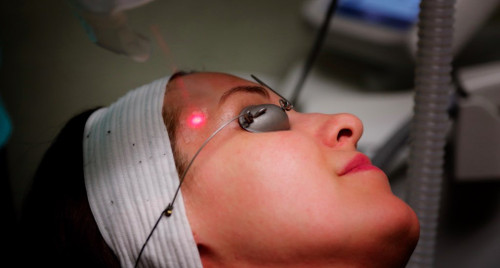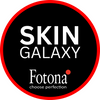-

Toskani MesoJect
$0.00 -

Hydrafacial
$0.00 -

Fotona HydraLase
$0.00 -

-

-

-

-

I Have Dry Or Dehyrated Skin
At Skin Galaxy we strive to give the best results in few treatments, with or without down time, Our Fotona devices treat all depths of the skin. With a thorough skin assessment on consultation we will initiate a plan for your desired result.
If your skin feels tight, dry and parched, there’s a good chance you may have dehydrated skin. But there’s a difference between dry and dehydrated skin, and they need different approaches (and different products) to fix the problem. Here’s a look at some of the causes behind dehydrated skin, as well as the symptoms and how to treat it.
What Is Dehydrated Skin?
Having dehydrated skin simply means that the skin doesn’t have enough water. Put another way, your body has lost more fluid than it has taken in, and the effects of dehydration are showing up on the face. It may look and feel dry and perhaps be itchy and dull. Dehydrated skin also tends to have an uneven tone, and fine lines are more easily noticeable.
What Are the Signs and Symptoms of Dehydrated Skin?
Dehydrated skin may feel dry and tight, but there may be other symptoms. Lack of water shows up as sunken eyes and under eye circles, as well as a dull complexion. Fine lines and wrinkles may also be more noticeable, and the whole face may look shadowed. Inflammation as well as redness and congestion may also be signs of dehydration.
What Does Dehydrated Skin Look Like?
To the naked eye, dehydrated skin may look dull and flaky. The face may also have shadows and fine lines. Severe dehydration affects things beyond the complexion. Urine may appear darker and you may feel dizzy and weak. Symptoms such as a dry mouth may also indicate severe dehydration, which means that medical attention may be necessary.
What is the Difference Between Dry and Dehydrated Skin?
Dry and dehydrated skin are not the same thing. Dry skin is a skin type, while dehydrated skin is a condition. If you have dry skin, it means that you have fewer oil glands, and you were probably born that way. Without sufficient oil, the skin cannot retain moisture or create a strong barrier to protect itself. Dry skin tends to be flaky and tight- and most of the flaking happens around the eyebrows and around the nostrils. Dehydrated skin is caused by a lack of water, rather than oil.
What Causes Dehydrated Skin?
Dehydrated skin is caused mainly by a lack of water intake but other factors come into play. These include caffeine consumption (the diuretic effects of caffeine can lead to dehydration), as well as diet, the weather and environment. Skincare products may also cause dehydration and humidity also plays a role. Some people may experience dehydration after an illness.
How to Test for Dry vs Dehydrated Skin
An easy way to test for dehydrated skin is to just pinch your cheek. Healthy, hydrated skin should bounce back. If it wrinkles, your skin could be dehydrated. You can also try squeezing the skin on the back of your hand.
What Causes Dehydrated Eyes?
Dehydrated eyes are also caused by lack of water consumption and/or extreme water loss. Severe dehydration can cause the eyes to stop producing tears. When eyes are not properly lubricated, eyes will feel dry and uncomfortable. Eye strain can also occur which can affect vision.
Can You Have Oily Dehydrated Skin?
Although it sounds counter-intuitive, yes you can have oily dehydrated skin. Dehydrated skin isn’t necessarily dry; it can be normal, combination or oily but feel tight and dry. Tight skin alone isn’t necessarily an indication of dehydrated skin. Truly dehydrated skin lacks water but the body may be producing too much oil to compensate. This is why dehydrated skin can often be mistaken for oily skin. Some people with oily skin may try to handle their oily skin by over cleansing and stripping the skin, which just continues the vicious cycle.
How to Hydrate Skin – And How to Fix Dehydrated Skin
If your skin is dehydrated, it takes a multi-prong approach to cure it. Here’s a breakdown.
Drink Up. Consuming enough water is the single most important way to fix dehydrated skin, as it replenishes the body’s lost liquids. Buy a reusable water bottle and keep it at your desk. Add some citrus or herbs to your water to add a little flavor.
Eat Foods With Water. Another way to boost hydration levels is to reach for water-filled foods, such as watermelon, cucumbers and melon.
Spritz Your Face. To add moisture during the day, buy a facial spray and mist regularly. Try a plain atomizer that contains only water or for a little extra kick, choose one with rosewater and herbs.
Rethink Your Workout. If you exercise regularly, you may not be replenishing the liquids you have lost from sweating. Make sure to hydrate before, during and after a workout. You can make your own sports drink using a base of coconut water and adding citrus and a touch of salt.
Look at Your Diet. The foods that you eat can help boost the skin’s ability to retain moisture, especially if you load up on foods rich in essential fatty acids. These include salmon, flaxseed, mackerel, olive oil and avocado.
Try Facial Oil. A face oil is a great way to add moisture to the face, and it can also help soothe the symptoms of a dry, tight feeling face. Add a few drops to your morning moisturizer or slather on a layer at night.
Cut Back on Alcohol and Caffeine. Alcohol and caffeine can be diuretics, so try to cut back on how much you drink.
Protect Your Skin From the Elements. This is key but can be harder to control. Try to minimize exposure to extreme temperature fluctuations, as well as minimizing exposure to harsh wind, cold and heat.
Don’t Strip Your Skin. Your natural oils go a long way in protecting the skin’s natural barrier. These oils can be stripped by hot water and too much scrubbing. Try to wash your face with lukewarm water and don’t take piping hot showers. It’s also a good idea to avoid steam rooms and saunas, and use a gentle cleanser on your face.
What Are the Best Moisturizers for Dehydrated Skin?
The single most important thing you can do if you have dehydrated skin is to drink more water, but in the meantime a good moisturizer will help the face look and feel better. Moisturizing ingredients generally fall into two categories- emollients and humectants.
Emollients are essential for helping with dry or dehydrated skin. They nourish and soothe the skin and also help protect it. Some of the best emollients include shea butter, lanolin, petrolatum,, coconut oil, mango oil, linoleic acid and evening primrose oil. Think of them as filling in the “cracks” in dry skin while humectants work by drawing water to the skin. Humectants include glycerin, alpha hydroxy acids, aloe vera, lactic acid and seaweed, as well as the all-star hyaluronic acid, which acts like a moisture magnet and can hold up to 1,000 times its weight in water. Niacinamide, or vitamin B3, helps to soothe dry, aggravated skin as it has anti-inflammatory properties. It also helps balance sebum production.
Oils also feel good on the face, so they provide instant relief while adding a big dose of moisture. Common facial oil ingredients include argan, rose hip, calendula and evening primrose oil. Facial oils can be worn on their own as a protective layer or just add a few drops to your morning moisturizer. They feel soothing on the skin and also help give it a little glow.
To soothe dry, tight feeling skin, you may also want to add a moisturizing serum to your beauty routine. A serum penetrates the skin deeper than a cream, and has the added benefiting of adding hydration while also protecting the skin. Look for serums containing hyaluronic acid, vitamin E, ceramides and argan oil.
The consistency of a face cream can also make a difference. A thick, rich face cream may feel instantly soothing on the face. Some people may find it too heavy and prefer a lighter weight gel or gel-cream. Another way to soothe a parched feeling face is to layer a serum under a lighter moisturizer, and then spritz a facial spray on top.
